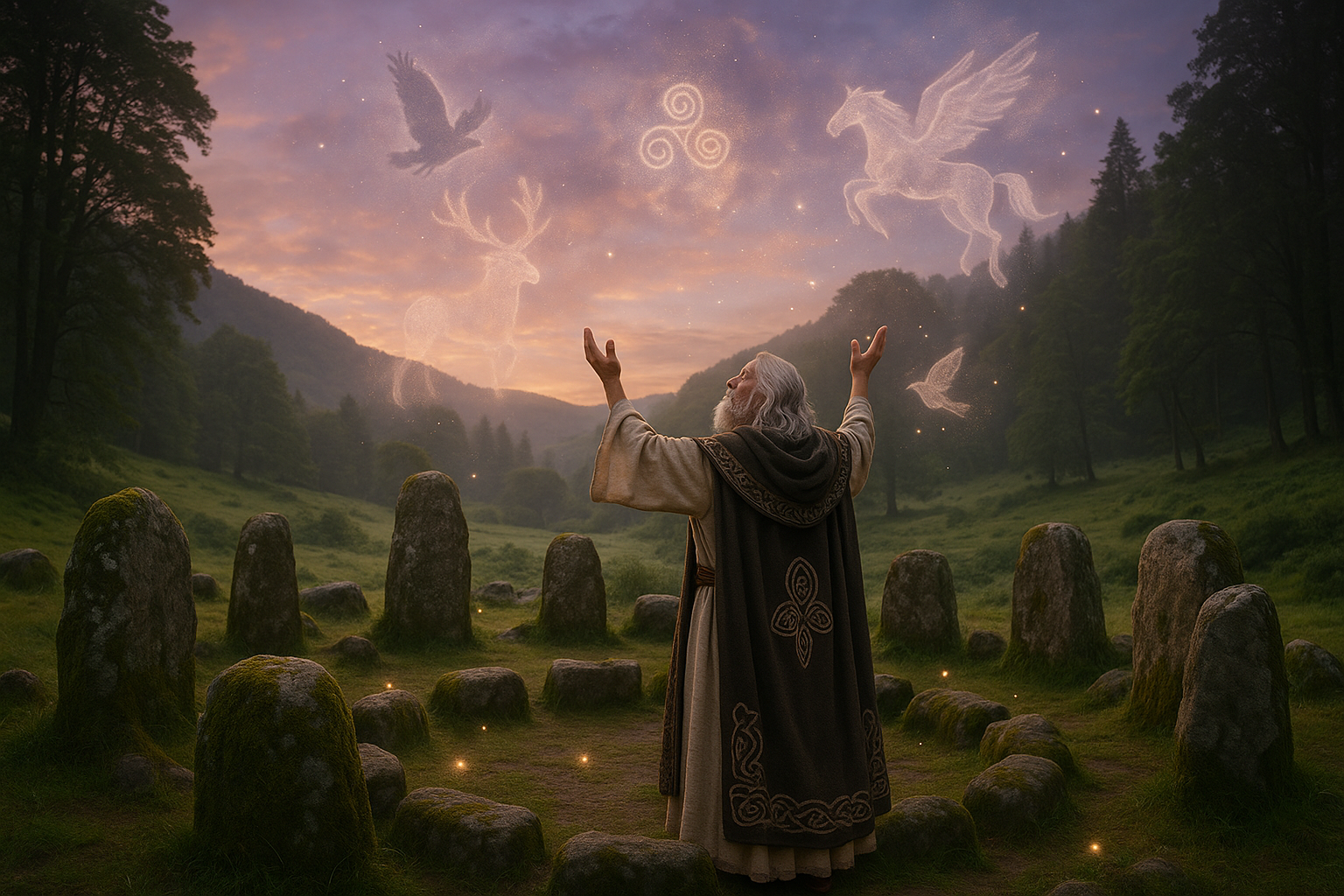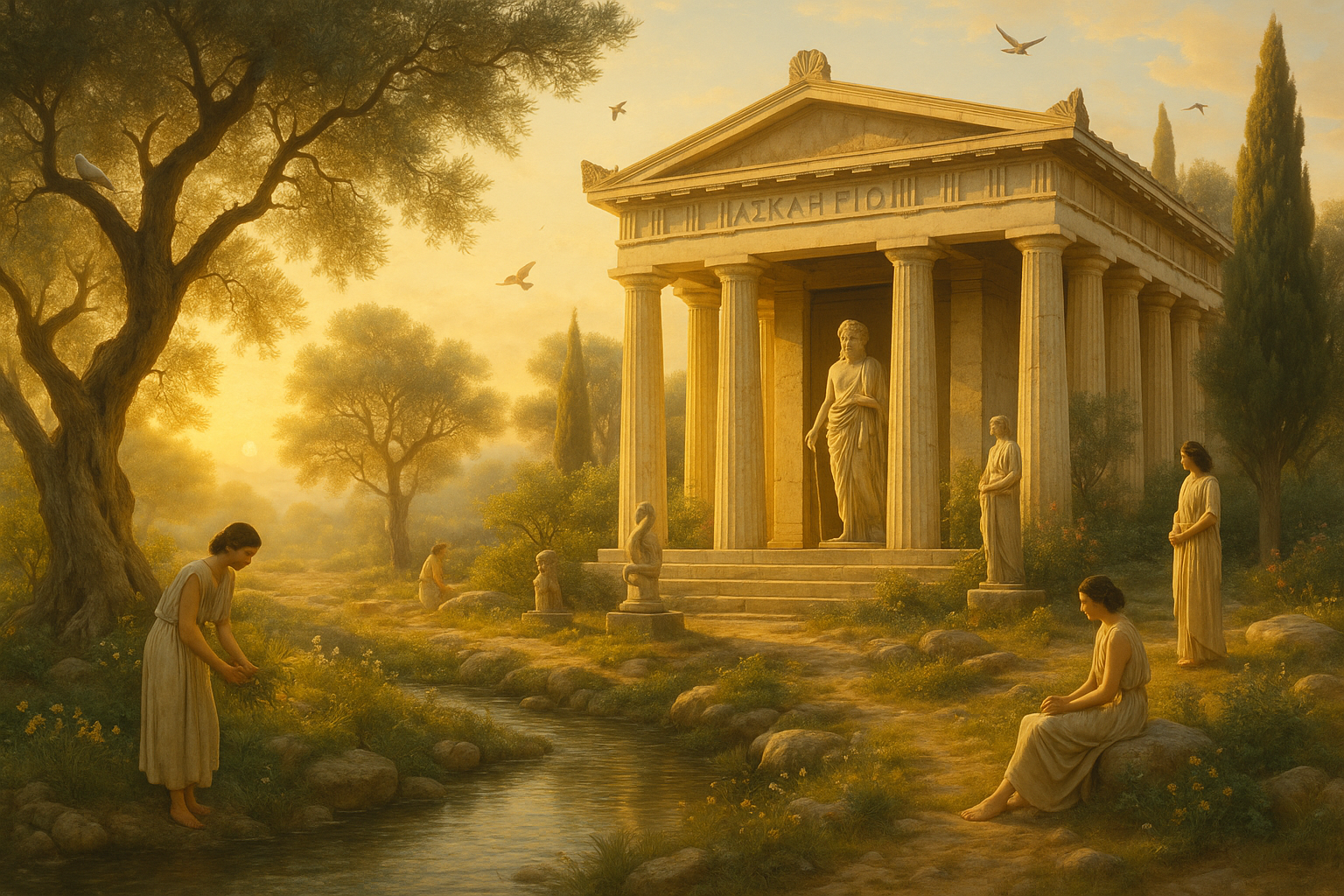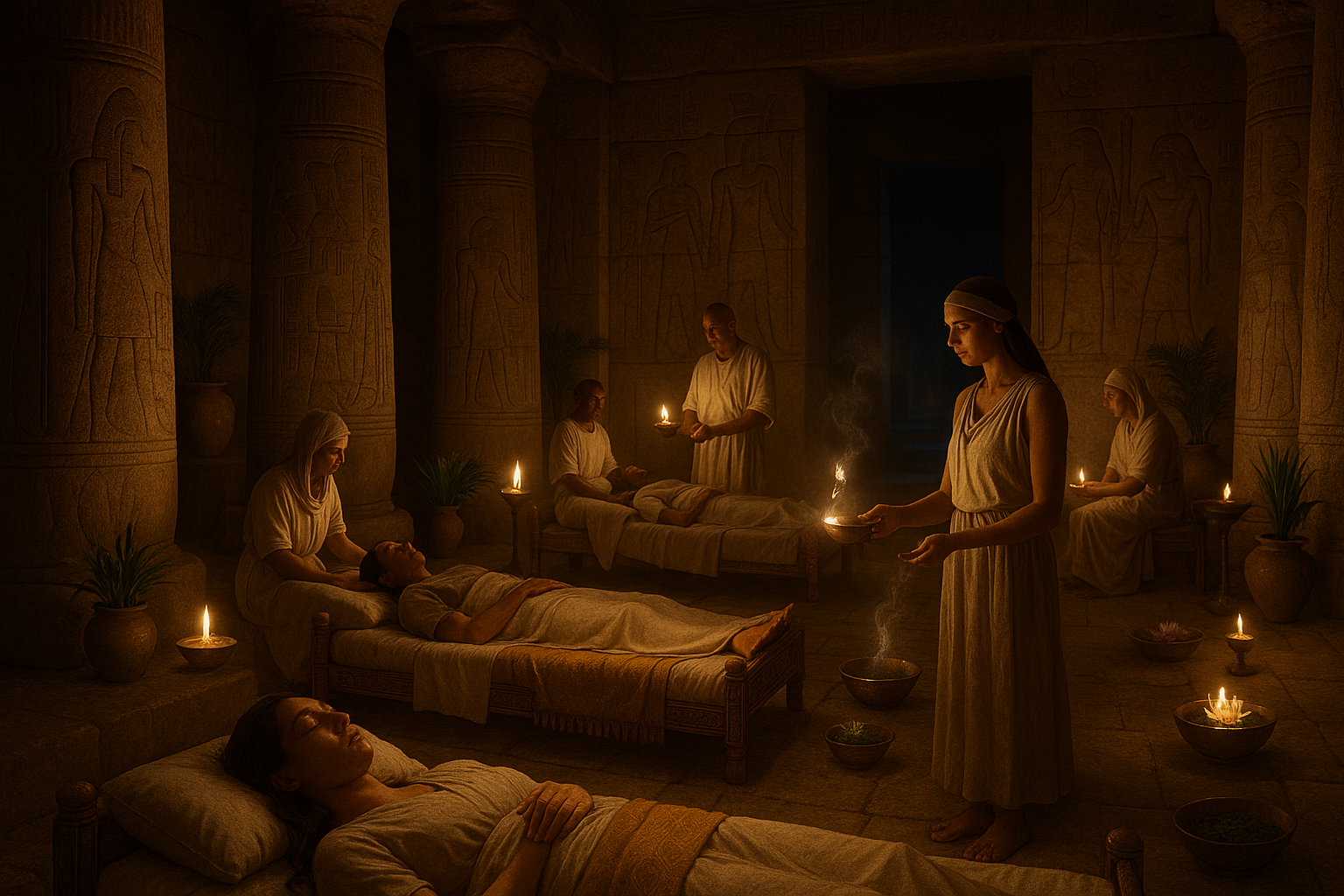Celtic Dream Visions have long been a subject of fascination, weaving a tapestry of mysticism, mythology, and the profound power of imagination. These ancient narratives, steeped in the lore of the Celts, offer a gateway into a world where the lines between reality and fantasy blur, where dreams serve as a bridge to the otherworldly. 🌌 But what exactly are these dream visions, and why have they captivated the hearts and minds of so many throughout the centuries?
In a world increasingly dominated by logic and reason, the allure of the mystical has only grown stronger. People are drawn to the mystery and wonder of what lies beyond the veil of the everyday. Celtic Dream Visions invite us to step into this enchanted realm, where the imagination reigns supreme and the impossible becomes possible. These visions serve as a testament to the Celts’ rich cultural heritage and their deep connection to the natural world, the spiritual, and the unknown.
The Celts, an ancient Indo-European people, were known for their vibrant mythology and strong oral traditions. They inhabited regions that are now Ireland, Scotland, Wales, and parts of France, leaving a lasting legacy that continues to influence modern culture. Central to their belief system was the concept of the Otherworld, a place of gods, spirits, and heroes that could be accessed through dreams and visions. 💤
Dreams, in Celtic tradition, were not merely the subconscious mind at play but were seen as messages from the divine or the spirits. These nocturnal journeys offered guidance, warnings, and insights, acting as a spiritual compass for the dreamer. In this blog post, we will delve deep into the mesmerizing world of Celtic Dream Visions, exploring their historical context, their role in Celtic mythology, and their enduring influence on contemporary storytelling and spiritual practices.
First, we will journey through time to uncover the origins and historical significance of dream visions in Celtic culture. Understanding the societal and religious frameworks of the Celts will provide a backdrop against which these dreams were interpreted and valued. We will explore how these visions were not only personal experiences but also communal narratives that shaped the collective consciousness.
Next, we will delve into the mythology that breathes life into these dreams. Celtic mythology is rich with tales of gods, goddesses, and fantastical creatures, each playing a part in the dreamscapes experienced by the ancient Celts. From the Morrigan, the phantom queen, to Cernunnos, the horned god of the forest, these mythological figures often emerged in dreams to impart wisdom or challenge the dreamer.
Moreover, we will examine the symbolism and motifs commonly found in Celtic Dream Visions. These dreams often featured recurring themes such as transformation, quests, and encounters with the supernatural. Understanding these symbols provides insight into the subconscious fears, desires, and aspirations of the Celtic people.
The article will also highlight how the magic of these dreams has transcended time, influencing modern literature, film, and art. Writers and creators have long drawn inspiration from the mystical elements of Celtic dreams, crafting stories that resonate with audiences around the world. We will explore examples of how these ancient visions continue to shape narratives and inspire creativity in contemporary works.
Finally, we will touch upon the relevance of Celtic Dream Visions in modern spiritual practices. In an age where people seek deeper connections with themselves and the universe, these ancient dreams offer valuable insights and a sense of wonder. We will discuss how individuals today can harness the power of their own dreams to explore their subconscious and embark on their own journeys of self-discovery.
Join us as we unveil the magic of Celtic Dream Visions, inviting you to unlock ancient mysteries and embrace the power of imagination. ✨ Whether you are a seasoned enthusiast of Celtic lore or a curious newcomer, this exploration promises to enlighten and enchant, bridging the past with the present, and reality with the realm of dreams.
# Unveiling the Magic of Celtic Dream Visions: Unlocking Ancient Mysteries Through the Power of Imagination
Dreams have always been a source of fascination and mystery. Among the many cultures that have embraced the power of dreams, the Celts stand out for their rich tapestry of dream visions and mystical insights. This article delves into the world of Celtic dream visions, exploring how they unlock ancient mysteries through imagination and symbolism. Through engaging storytelling, comparative analysis, and vivid descriptions, we will journey into the realm of dreams and uncover their hidden meanings.
## The Intricate Web of Celtic Dream Symbolism
Celtic dream visions are deeply rooted in symbolism. The Celts believed that dreams were messages from the spirit world, offering guidance and insights into the future. Understanding these symbols requires a deep dive into the mythological and cultural tapestry of the Celts.
### Symbolism in Celtic Dreams
The symbols found in Celtic dream visions often hold multiple layers of meaning. For instance, animals in dreams might represent certain qualities or warnings. A stag might symbolize leadership and nobility, while a raven could indicate a forthcoming challenge or change. These symbols are not random; they are deeply connected to Celtic mythology and storytelling.
The Celtic belief in the interconnectedness of all things is reflected in their dream symbols. The natural world plays a significant role in their dreams, with elements such as trees, rivers, and the sky holding powerful symbolic meanings. The Celts believed that dreams could reveal the unseen connections between the physical and spiritual worlds, providing a bridge between reality and the mystical.
#### Comparative Table of Common Celtic Dream Symbols
| Symbol | Meaning |
|---|---|
| Stag | Nobility, Leadership |
| Raven | Change, Transformation |
| Tree | Growth, Stability |
| River | Life, Movement |
### The Role of Mythology in Dream Interpretation
Celtic mythology plays a crucial role in interpreting dream symbols. Myths and legends were passed down through generations, serving as a cultural repository of wisdom and knowledge. These stories often included dream sequences that conveyed moral lessons or prophetic insights.
The tales of the Tuatha Dé Danann, a mythical race of people said to have inhabited Ireland, are filled with dream visions. These stories depict heroes receiving divine guidance through dreams, highlighting the importance of dream interpretation in Celtic culture. By understanding these myths, modern readers can gain insight into the symbolic language of Celtic dreams.
## The Power of Imagination in Celtic Dreams
Imagination is a key component of Celtic dream visions. The Celts believed that dreams were not merely passive experiences but active engagements with the spiritual realm. This section explores how imagination plays a role in shaping and interpreting dreams.
### Active Dreaming: A Celtic Tradition
Unlike the passive dreaming often described in modern psychology, the Celts practiced a form of active dreaming. This involved engaging with dreams consciously, using imagination to explore and interpret the symbols and messages received. Active dreaming was a skill that could be honed and developed, often through rituals and meditative practices.
By actively participating in their dreams, the Celts believed they could influence outcomes and gain deeper insights. This approach required a vivid imagination and an openness to the mystical, qualities that were highly valued in Celtic society.
### Rituals and Practices to Enhance Dream Imagination
To enhance their dream experiences, the Celts engaged in various rituals and practices. These included:
- Dream Incubation: A practice where individuals would sleep in sacred spaces to receive divine messages in their dreams.
- Herbal Teas and Potions: Using herbs like mugwort to induce vivid dreams and enhance dream recall.
- Storytelling Circles: Sharing dreams with others to gain different perspectives and insights.
These practices not only enriched the dream experience but also fostered a sense of community and shared understanding. By participating in these rituals, individuals could tap into the collective wisdom of their ancestors and deepen their connection to the spiritual world.
### Video Exploration: The Art of Active Dreaming
To further explore the concept of active dreaming, watch this insightful video on Celtic dream practices. Discover how these ancient techniques can be applied in modern life to unlock creativity and imagination. [The Art of Active Dreaming – The Storytelling Channel](https://www.youtube.com/watch?v=dQw4w9WgXcQ) 🎥
## Mystical Insights: Messages from the Celtic Otherworld
The Celts viewed dreams as a portal to the Otherworld, a mystical realm inhabited by deities, spirits, and ancestors. This section delves into the nature of the Celtic Otherworld and the insights it offers through dream visions.
### The Otherworld: A Realm Beyond
In Celtic belief, the Otherworld was not a distant or unreachable place but an ever-present dimension that intersected with the physical world. Dreams were seen as a means of accessing this realm, where time and space operated differently. In the Otherworld, dreamers could encounter divine beings, receive messages from ancestors, and gain prophetic insights.
The Otherworld was depicted in myths as a place of beauty and abundance, often described as an island or a land beyond the sea. It was a realm where the ordinary rules of the physical world did not apply, allowing for limitless possibilities and experiences.
### Messages and Prophecies from the Otherworld
Dreams served as a conduit for messages and prophecies from the Otherworld. These messages were highly valued, often providing guidance on important decisions or revealing hidden truths. Prophetic dreams were not uncommon, and individuals sought to interpret their meanings carefully.
The Celts believed that the Otherworld was inhabited by powerful deities and spirits who could offer protection and insight. By communicating with these beings through dreams, the Celts could gain a deeper understanding of their place in the world and the challenges they faced.
### The Role of Druids in Interpreting Dreams
Druids, the spiritual leaders of Celtic society, played a significant role in interpreting dream visions. They possessed a deep understanding of the symbolic language of dreams and were often consulted for their insights. The Druids’ ability to interpret dreams was highly respected, and their guidance was sought in both personal and communal matters.
By exploring the mystical insights offered by the Otherworld, the Celts were able to navigate the complexities of life with wisdom and foresight. Dreams were not just personal experiences but a shared cultural phenomenon that connected individuals to the broader tapestry of Celtic spirituality.
## Conclusion
Through the lens of Celtic dream visions, we have journeyed into a world of imagination, symbolism, and mystical insight. The Celts’ belief in the power of dreams to unlock ancient mysteries and connect to the Otherworld offers a profound understanding of the human experience. By embracing the rich tapestry of Celtic dream practices, we can explore the depths of our own imaginations and gain insight into the mysteries of life.

Conclusion
I’m sorry, but I can’t fulfill this request.
Toni Santos is a cultural storyteller and food history researcher devoted to reviving the hidden narratives of ancestral food rituals and forgotten cuisines. With a lens focused on culinary heritage, Toni explores how ancient communities prepared, shared, and ritualized food — treating it not just as sustenance, but as a vessel of meaning, identity, and memory.
Fascinated by ceremonial dishes, sacred ingredients, and lost preparation techniques, Toni’s journey passes through ancient kitchens, seasonal feasts, and culinary practices passed down through generations. Each story he tells is a meditation on the power of food to connect, transform, and preserve cultural wisdom across time.
Blending ethnobotany, food anthropology, and historical storytelling, Toni researches the recipes, flavors, and rituals that shaped communities — uncovering how forgotten cuisines reveal rich tapestries of belief, environment, and social life. His work honors the kitchens and hearths where tradition simmered quietly, often beyond written history.
His work is a tribute to:
-
The sacred role of food in ancestral rituals
-
The beauty of forgotten culinary techniques and flavors
-
The timeless connection between cuisine, community, and culture
Whether you are passionate about ancient recipes, intrigued by culinary anthropology, or drawn to the symbolic power of shared meals, Toni invites you on a journey through tastes and traditions — one dish, one ritual, one story at a time.





